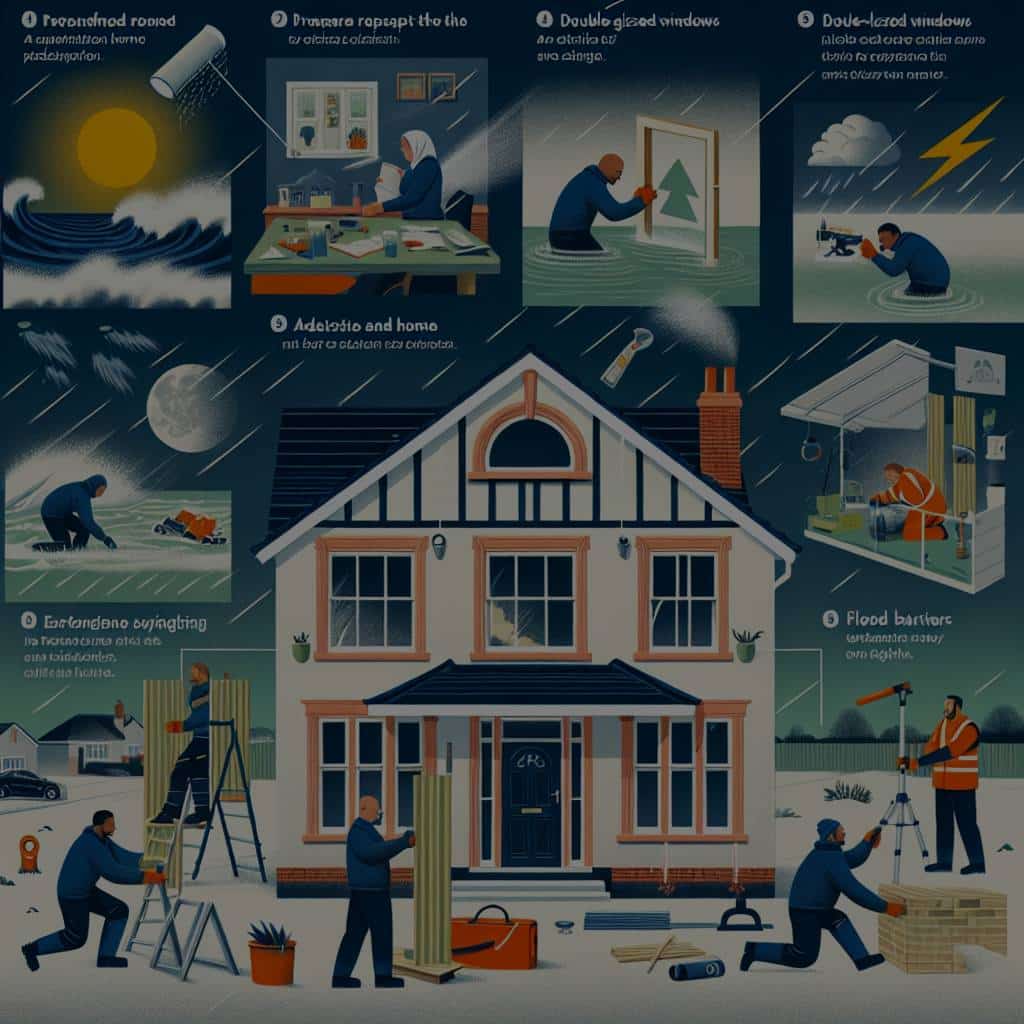How to prepare and adapt UK homes for the challenges of extreme weather events?

Climate change is unquestionably the greatest challenge of our time. As the world’s weather patterns become increasingly unpredictable, the importance of preparing and adapting our homes to withstand these extreme weather events becomes both a pressing need and a civic duty. It’s not just about protecting our individual houses – it’s also about caring for our communities, preserving our way of life, and taking responsible actions for the planet’s future. This guide provides a comprehensive report on how to make UK homes resilient to the changing climate, focusing on the specific challenges faced by residents in London, but applicable to other parts of the country as well.
Understanding the Impact of Climate on Homes
Before we dive into the practical adaptations for our homes, it’s essential to understand how climate change affects them. The UK government and various scientific reports have identified several primary effects of climate change, including increased rainfall and flooding, higher temperatures, and more frequent heatwaves. These weather extremes pose significant threats to the structure and comfort of our homes.
Also to see : Can urban beekeeping initiatives support biodiversity in UK cities?
Rainfall and Flooding: Increased rainfall levels can lead to surface water flooding, causing substantial damage to properties. In addition, higher groundwater levels can lead to structural issues, dampness, and increased risk of mould growth.
Heatwaves: Higher temperatures and more frequent heatwaves can make homes uncomfortable and potentially harmful, especially for vulnerable members of society such as the elderly and those with pre-existing health conditions.
Also to see : What are the best approaches to introduce circular economy practices in UK businesses?
Adapting Your Home to Increased Rainfall and Flooding
In light of the above challenges, taking preventative measures can help protect your home from the impact of increased rainfall and potential flooding. Here, we will detail some of the steps you can take.
Water-Resilient Building Materials: Use of water-resistant materials for doors, windows, walls, and floors can mitigate the impact of flooding. Ensure that you select permeable paving for driveways and gardens to allow water to drain away naturally.
Flood Barriers: Where possible, consider installing flood barriers. While they may not prevent all water from entering, they can significantly reduce the amount.
Improved Drainage Systems: A well-maintained and robust drainage system can help channel water away from your property, reducing the risk of water pooling and subsequent flooding.
Adapting Your Home for Higher Temperatures and Heatwaves
While some may relish the idea of a hotter British summer, the reality is that prolonged periods of excessive heat can have severe implications for our health and comfort within our homes. Here are some steps you can take to prepare.
Insulation: Good insulation is not only essential for keeping homes warm in winter – it’s equally critical to cool them in summer. It works by slowing down the transfer of heat, which in turn helps to maintain a more stable indoor temperature.
Ventilation: Proper ventilation can help to remove excess heat from your home. This could be as simple as opening windows to allow a cross-breeze, or more complex systems like whole-house ventilation units.
Shading: External shading, such as awnings or pergolas, can prevent direct sunlight from entering windows and heating up rooms.
The Role of Government in Climate Adaptation
While individual actions are crucial, government intervention is equally important in building resilience against climate change. Various policy measures can help drive adaptation efforts, from regulations on building standards to financial incentives for modifying existing homes.
Building Regulations: Government can play a critical role by enforcing stringent building codes that ensure new homes are built to withstand future climate impacts.
Financial Incentives: Offering schemes such as grants, tax rebates, or discounted loans for homeowners who invest in climate adaptation measures can encourage more people to take necessary action.
Community Engagement and the Power of Collective Action
The fight against climate change is not a battle that can be won alone. It requires collective action, from commenting on local development plans, voting for climate-conscious candidates, to engaging with your community to raise awareness and pool resources for adaptation measures.
Community Resilience Plans: Formulating a community plan can help identify at-risk areas and coordinate efforts for response and recovery.
Sharing Knowledge: By sharing experiences and knowledge about climate adaptation, communities can learn from each other and help to raise overall resilience levels.
Collective Action: Working together, communities can achieve much more than individuals acting alone. Pooling resources can help fund larger adaptation projects, while collective lobbying can influence local government decisions.
In short, adapting our homes and communities to the challenges of climate change is not just a necessity – it’s an imperative. By taking individual actions, leveraging government support, and engaging with our communities, we can ensure a safer, more resilient future for all.
Adapting Your Home to Improve Energy Efficiency
As the climate continues to change, it is becoming increasingly important to make homes as energy-efficient as possible. This can help to reduce the amount of carbon emissions that contribute to climate change, while also helping homeowners save money on their energy bills. There are a number of ways that this can be achieved.
Smart Thermostats: A smart thermostat can help you to better control the temperature in your home, reducing unnecessary heating and cooling and therefore saving energy.
Insulation: Proper insulation can help to keep your home warm in the winter and cool in the summer, reducing the need for air conditioning or heating. This can be particularly beneficial during extreme weather events such as heat waves or cold snaps.
Energy-Efficient Appliances: Replacing old, inefficient appliances with newer, energy-efficient models can significantly reduce the amount of electricity that your home uses.
Solar Panels: Installing solar panels on your home can generate renewable electricity and reduce your reliance on the grid. This is not only good for the environment, but can also save you money on your energy bills.
Conclusion: The Importance of Climate Change Adaptation
In the face of the growing threat of climate change, it is clear that we must all take action to adapt and prepare for the extreme weather events that this change brings. The steps outlined in this report comment on the importance of adapting our homes to withstand increased rainfall and flooding, higher temperatures and heatwaves, and improving energy efficiency.
The role of the government in implementing policy changes and providing financial incentives is crucial, but so is the part each community member plays. Through care, comment, and collective action, we can make a real difference in protecting our homes, communities, and planet.
Don’t forget that even small actions can have a big impact. Whether it’s installing a smart thermostat, improving your home’s insulation, or simply engaging in community efforts to raise awareness and pool resources, every step taken towards climate resilience is a step in the right direction.
Remember, climate change is not just a distant problem for future generations to handle. The effects can be felt here and now, from flash flooding to extreme heat waves. We can all play a part in adaptation and resilience to these climate changes. It’s not just about preserving our homes, but also about safeguarding our communities and the planet for future generations. Together, we can ensure a safer, more resilient future.
